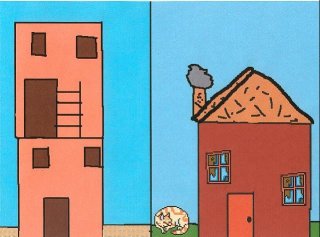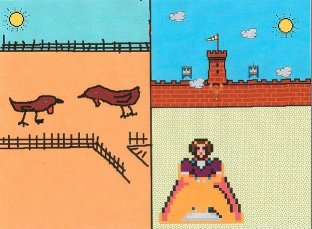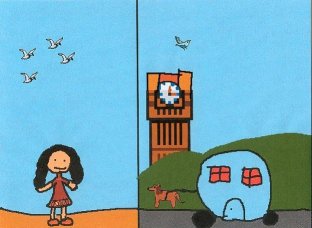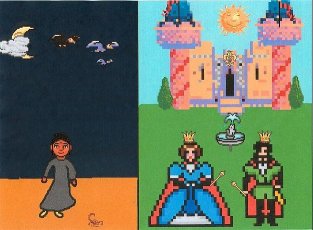|
The Turkey Girl (retold) by Penny Pollock Illustrated by Ed Young A ZUNI CINDERELLA STORY This is a Native American folktale about a poor orphan girl who spends her time herding turkeys. She desperately wants to attend a sacred dance but realizes she cannot go since the only clothes she owns are all tattered and worn. The “Old One” (a turkey) comes to her aid and asks her to promise to be back before sundown. The turkeys make her a dress of feathers and adorn her with turquoise jewelry. She goes to the dance but ends up having so much fun, she forgets about the time. She frantically flees and returns home to find the turkeys have all flown the coop! |
||||
|
We read the book, The Turkey Girl (retold) by Penny Pollock. We learned about the Native American Zuni tribe. We identified where the story took place and discussed the type of homes the Zunis lived in. We talked about their climate, plant life, and terrain. We discussed what a folktale was and learned some new vocabulary words (arroyo, adobe, mantle, mesa, and pueblo). We found out that the Zuni tribe was also known by other names (Ashiwi and Taa Ashiwani which means “corn peoples”). Next, we compared The Turkey Girl to the story of Cinderella. We found many similarities and differences between the stories, but the biggest difference was in the endings. Cinderella lived “happily ever after” but the Turkey Girl broke her promise and found all her turkeys gone. Finally, we divided our class into four cooperative groups to illustrate some important similarities/differences in the stories. We also wrote captions for our pictures.
The Turkey Girl lived in a pueblo. Cinderella lived in a small cottage.
The “Old One” helped The Turkey Girl and the Fairy Godmother helped Cinderella.
The Turkey Girl traveled on foot and Cinderella traveled in a carriage.
: The Turkey Girl broke her promise, so the turkeys left. The Turkey Girl’s clothes turned to rags again. Cinderella married the prince and lived in a palace for the rest of her life. |
||||
|
NJ Core Curriculum Content Standards CROSS CONTENT WORKPLACE READINESS 2. All Students will use information, technology, and
other tools: LANGUAGE ARTS LITERACY CURRICULUM 3.2 All students will listen actively in a variety of
situations to information from a variety of sources National Educational Technology Standards for Students (NETS) 2. Social, ethical, and human issues 3. Technology productivity tools 4. Technology communication tools |



